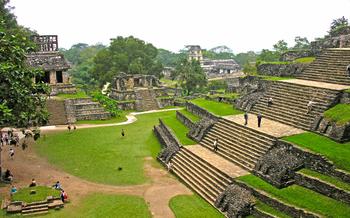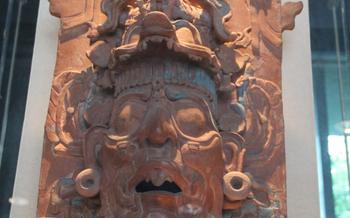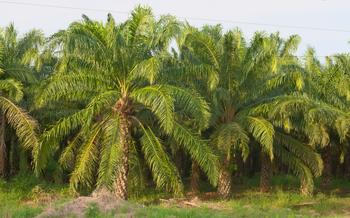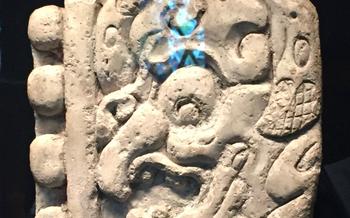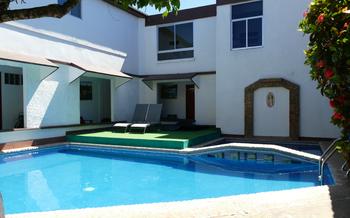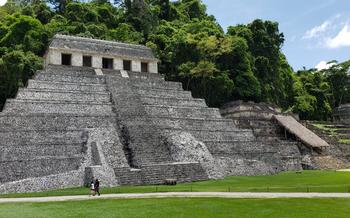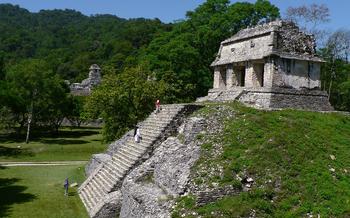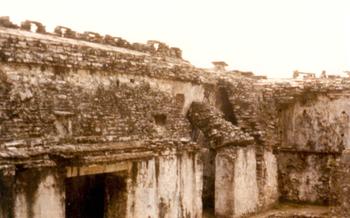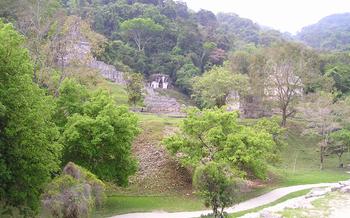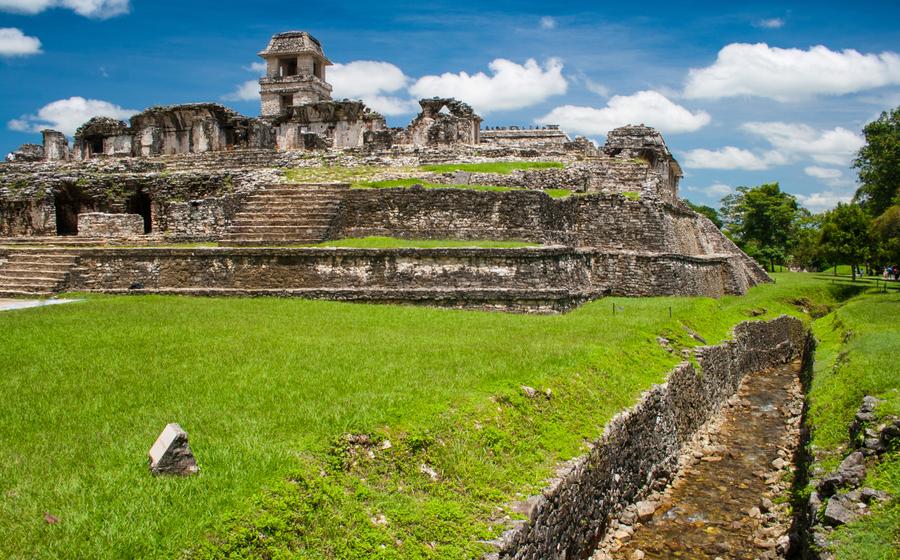
The Aqueduct at Palenque
- History of the Aqueduct at Palenque
- Location of the Aqueduct
- Significance of the Aqueduct
- Architecture and Design
- Water System and Function
- Exploration and Discovery
- Conservation and Preservation
- Natural Surroundings
- Cultural Importance
- Tourism and Visitors
- Photography and Videography
- Regulations and Guidelines:
- Nearby Attractions
- Accommodations and Dining
- Insider Tip
History of the Aqueduct at Palenque
The Aqueduct at Palenque, an ancient Mayan water system, stands as a testament to the ingenuity and engineering prowess of this remarkable civilization. Constructed during the Late Classic period (600-900 AD), the aqueduct played a pivotal role in the development and prosperity of the Mayan city of Palenque. Its innovative design, utilizing gravity to efficiently distribute water throughout the city, reflects the advanced knowledge and resourcefulness of the Maya.
The aqueduct, built using locally sourced limestone, consisted of a complex network of canals, reservoirs, and underground pipes. This sophisticated system channeled water from a nearby river to various parts of the city, providing a reliable supply for drinking, irrigation, and hygiene. The aqueduct's construction required meticulous planning and engineering skills, as it traversed challenging terrain and incorporated intricate hydraulic mechanisms to regulate water flow.
The aqueduct's importance extended beyond its practical function, as it held cultural and religious significance for the Maya. It was believed that water possessed sacred properties, and the aqueduct served as a symbol of the Maya's connection to the natural world and their reverence for water as a life-giving resource. Today, the aqueduct stands as a reminder of the Maya's remarkable achievements in engineering and their profound understanding of the vital importance of water for the flourishing of their civilization.
Location of the Aqueduct
The awe-inspiring Aqueduct at Palenque lies within the captivating city of Palenque, nestled amidst the verdant hills of Chiapas, Mexico. This ancient marvel is situated in close proximity to other notable landmarks that beckon history and culture enthusiasts. The majestic Palace, with its intricate carvings and imposing presence, stands as a testament to the architectural prowess of the Maya. The Temple of Inscriptions, housing the tomb of the revered ruler Pacal the Great, invites visitors to delve into the mysteries of the ancient Maya civilization.
The aqueduct's strategic location ensures easy accessibility for travelers. Regular buses and taxis provide convenient transportation options, connecting visitors to this historical gem. Alternatively, renting a car offers the freedom to explore the city and its surroundings at your own pace.
The Aqueduct at Palenque generally welcomes visitors from Tuesday to Sunday, with operating hours typically ranging from 8:00 AM to 5:00 PM. To fully immerse yourself in the history and significance of this ancient marvel, guided tours are highly recommended. Knowledgeable guides bring the aqueduct's story to life, sharing insights into its construction, function, and cultural importance. Admission fees are nominal, contributing to the preservation and maintenance of this remarkable heritage site.
Significance of the Aqueduct
The aqueduct at Palenque stands as a testament to the ingenuity and resourcefulness of the ancient Maya. Its significance extends far beyond its practical function, reaching into the realms of engineering, agriculture, and urban development.
As an engineering marvel of the ancient world, the aqueduct showcased the Maya's mastery of water management and hydraulics. They skillfully harnessed the power of gravity to efficiently distribute water throughout the city, demonstrating their advanced understanding of fluid dynamics and construction techniques.
The aqueduct was not merely a feat of engineering but also played a crucial role in the daily life and prosperity of Palenque. It provided a steady supply of clean water for drinking, irrigation, and hygiene, contributing to the overall health and sanitation of the city. This reliable water source allowed the Maya to sustain a large population and engage in intensive agriculture, leading to increased food production and economic growth.
Moreover, the aqueduct played a pivotal role in the city's development and prosperity. By ensuring a reliable water supply, it enabled the Maya to expand their urban center and support a growing population. The availability of water fostered agricultural productivity, which in turn supported a thriving trade network and contributed to the city's status as a major cultural and economic hub in the Maya world.
Architecture and Design
The aqueduct at Palenque is a marvel of ancient engineering and design. Constructed using locally sourced limestone blocks, the aqueduct showcases the remarkable craftsmanship and ingenuity of the Maya. The massive stone blocks were carefully cut and fitted together without the use of mortar, demonstrating the Maya's advanced knowledge of construction techniques.
The aqueduct is adorned with intricate carvings and decorations, adding an artistic touch to its functional purpose. These carvings depict various motifs, including human figures, animals, and geometric patterns. The combination of function and aesthetics is a testament to the Maya's holistic approach to architecture and design.
The aqueduct's unique design allowed for efficient water distribution throughout the city. The water flowed through a series of channels and reservoirs, using gravity to maintain a constant supply. This innovative system ensured that the city's inhabitants had access to clean water for drinking, irrigation, and hygiene, contributing to the overall health and prosperity of Palenque.
The aqueduct's design has had a lasting impact on modern engineering and architecture. Its principles of gravity-fed water distribution and efficient use of local materials have been adopted in modern water management systems. The aqueduct stands as a testament to the Maya's enduring legacy and their contributions to the field of architecture.
Water System and Function
The aqueduct at Palenque was an intricate network of canals and reservoirs that provided the city with a reliable and efficient water supply. Utilizing the natural topography, the Maya constructed a gravity-fed system that channeled water from distant springs and rivers into the city center. This remarkable feat of engineering ensured a consistent flow of clean water for drinking, irrigation, and hygiene purposes, contributing significantly to the overall health and sanitation of the city. The aqueduct's sophisticated design allowed for the controlled distribution of water throughout Palenque, enabling the Maya to sustain a thriving urban population and maintain their agricultural productivity.
Exploration and Discovery
The Aqueduct at Palenque remained hidden and forgotten for centuries, swallowed by the relentless jungle growth. It was not until the 18th century that the aqueduct was rediscovered by a Spanish explorer named Antonio del Río. Intrigued by the ruins, he embarked on an ambitious mission to excavate and study the ancient site.
Del Río's work revealed a complex and sophisticated water system that far surpassed anything seen in Europe at the time. His findings sparked a wave of interest among archaeologists and historians, leading to extensive excavations and research in the 19th and 20th centuries.
However, studying the aqueduct presented significant challenges. The dense vegetation, coupled with the fragility of the ancient ruins, made it difficult to uncover and document the full extent of the system. Additionally, political instability and conflicts in the region often hindered archaeological efforts.
Despite these obstacles, archaeologists have made remarkable progress in understanding the aqueduct's construction, function, and significance. Ongoing research continues to shed light on the ingenuity and resourcefulness of the ancient Maya, while also providing valuable insights into their daily lives and urban planning.
Conservation and Preservation
The Aqueduct at Palenque has undergone significant conservation and preservation efforts to protect and restore its ancient grandeur. Archaeologists, historians, and local communities have collaborated to ensure the preservation of this cultural heritage for future generations. The challenges faced include the effects of time, environmental factors, and the impact of tourism. Techniques such as restoration, stabilization, and documentation have been employed to safeguard the aqueduct's structures and intricate carvings. Ongoing research and monitoring help identify areas requiring attention, ensuring the site's long-term preservation. By protecting the Aqueduct at Palenque, we not only preserve a remarkable piece of Mayan history but also contribute to the sustainability and cultural significance of this ancient marvel.
Natural Surroundings
The Aqueduct at Palenque is nestled amidst a breathtaking natural landscape that further enhances its allure. Lush vegetation and tropical forests envelop the ancient ruins, creating a vibrant and biodiverse ecosystem. Visitors can immerse themselves in the beauty of the surrounding nature while exploring the aqueduct.
The area is home to a diverse array of wildlife, including exotic birds, monkeys, and reptiles. Birdwatching enthusiasts can delight in spotting colorful species such as toucans, parrots, and woodpeckers. Nature photographers will find ample opportunities to capture stunning images of the fauna and flora that inhabit this region.
Hiking trails wind through the lush forests, offering visitors a chance to explore the natural surroundings and discover hidden gems. The trails are well-maintained and suitable for hikers of all levels. Along the way, visitors can admire the towering trees, cascading waterfalls, and vibrant wildflowers.
Preserving the natural environment alongside the historical site is crucial. Sustainable tourism practices and conservation efforts help protect the delicate ecosystem and ensure that future generations can appreciate the beauty of both the aqueduct and its surroundings. Visitors are encouraged to be responsible travelers and respect the natural heritage of this unique destination.
Cultural Importance
The Aqueduct at Palenque stands as a testament to the advanced knowledge and engineering skills of the ancient Maya. It represents their deep understanding of water management and their ability to harness natural resources for the benefit of their society. The aqueduct played a crucial role in the development and prosperity of the city, providing clean water for drinking, irrigation, and hygiene. This, in turn, contributed to the overall health and sanitation of the city, leading to a thriving and vibrant community.
The aqueduct is also a symbol of Mayan cultural heritage, showcasing their connection to the environment and their reverence for water. The intricate carvings and decorations that adorn the aqueduct reflect their artistic prowess and their belief in the sacredness of water. By studying and preserving this ancient marvel, we gain a deeper understanding of the rich history and legacy of the Maya, shedding light on their sophisticated civilization and their enduring impact on the world.
Tourism and Visitors
The Aqueduct at Palenque is a popular destination for tourists and history enthusiasts alike. Guided tours are available to provide insights into the history, engineering, and significance of the aqueduct. These tours offer a deeper understanding of the ancient Mayan civilization and its remarkable achievements. Educational programs are also available for schools and groups, providing an opportunity for students to learn about Mayan culture and history in an engaging and interactive way.
To make the most of your visit, plan your trip during the dry season (November to April) when the weather is pleasant, and the skies are clear for stunning photo opportunities. Remember to wear comfortable shoes, as you'll be doing a fair amount of walking. Bring along a hat, sunglasses, and sunscreen to protect yourself from the tropical sun.
It's important to practice respectful and responsible tourism when visiting the aqueduct. Follow designated trails, avoid touching or climbing on the ruins, and be mindful of the surrounding natural environment. By respecting the site and its surroundings, you can help preserve this ancient wonder for future generations to enjoy and appreciate.
Photography and Videography
The aqueduct at Palenque presents a picturesque subject for photography and videography. With its towering arches, intricate carvings, and lush jungle backdrop, it offers a variety of stunning shots. To capture the best images, consider using a wide-angle lens to showcase the scale and grandeur of the structure. Experiment with different angles and perspectives to create unique and dynamic compositions. The morning light is often ideal for photography, as it casts a warm glow on the ruins. For videographers, capturing footage of the aqueduct during sunrise or sunset can create a magical and atmospheric effect.
Regulations and Guidelines:
While photography and videography are generally permitted at the aqueduct, it's important to be mindful of the regulations and guidelines in place. The use of tripods and other photography equipment may be restricted in certain areas. It's essential to respect the privacy and rights of other visitors by avoiding intrusive or disruptive behavior. Flash photography is generally not allowed inside the ruins, as it can damage the delicate carvings. Adhering to these guidelines ensures that everyone can enjoy the site while preserving its integrity for future generations.
Nearby Attractions
Your journey in Palenque doesn't end with the aqueduct. The city is a treasure trove of ancient wonders and natural marvels, all waiting to be explored. Just a short walk from the aqueduct, you'll find the Palenque Archaeological Zone, a UNESCO World Heritage Site that houses some of the most impressive Mayan ruins in Mexico. Marvel at the intricate carvings and towering pyramids that tell the story of this ancient civilization.
For a deeper dive into Mayan culture, visit the Palenque Museum, which houses a vast collection of artifacts, sculptures, and pottery from the region. Learn about the Maya's advanced writing system, their religious beliefs, and their everyday life.
If you're looking for a break from history, immerse yourself in the stunning natural beauty of Palenque. Hike through the lush rainforests that surround the city, where you can spot exotic birds, monkeys, and other wildlife. Take a refreshing dip in the Agua Azul Waterfalls, a series of cascading waterfalls that create a breathtaking natural spectacle.
To make the most of your time in Palenque, consider hiring a local guide. These knowledgeable experts can provide insights into the history, culture, and ecology of the region, ensuring you don't miss any hidden gems. With so much to see and do, Palenque offers an unforgettable journey into the heart of the ancient Maya world.
Accommodations and Dining
The city of Palenque offers a wide range of accommodation options catering to different budgets and preferences, ensuring a comfortable and memorable stay. Whether you prefer the convenience of a modern hotel or the charm of a traditional guesthouse, you will find suitable options near the aqueduct and throughout the city. Several hotels offer stunning views of the lush surroundings and the ancient ruins, allowing you to wake up to the beauty of Palenque.
For a truly authentic experience, consider staying at a local guesthouse or bed and breakfast, where you can immerse yourself in the local culture and enjoy personalized hospitality. These charming accommodations often offer traditional Mayan dishes and can provide valuable insights into the history and customs of the region.
When it comes to dining, Palenque boasts a diverse culinary scene with something to satisfy every palate. From traditional Mayan cuisine to international flavors, you will find a variety of restaurants and cafes to choose from. Indulge in regional delicacies such as pochta, a flavorful soup made with corn and vegetables, or pibil, a traditional Mayan dish of slow-roasted pork wrapped in banana leaves.
For a taste of local life, head to the bustling market, where you can find fresh produce, local specialties, and handmade crafts. Here, you can interact with friendly vendors and sample delicious street food, such as tamales and tacos. By supporting local businesses, you not only enjoy authentic cuisine but also contribute to the community's economic development.
Whether you prefer fine dining or casual eateries, Palenque offers an array of culinary experiences to complement your visit to the aqueduct and other attractions. Remember to embrace the local flavors and traditions for a truly immersive and unforgettable journey.
Insider Tip
For an unforgettable experience, consider visiting the aqueduct at sunrise or sunset. The golden light casts a warm glow on the ancient ruins, creating a magical atmosphere. Take your time to explore the site, soak in the tranquility, and capture stunning photographs. Remember to bring your camera and tripod to capture the best shots.
As you wander through the aqueduct, keep an eye out for hidden gems and secret spots. Look for intricate carvings and decorations that may have been overlooked by others. Explore the surrounding jungle trails to discover hidden cenotes, caves, and wildlife.
To truly immerse yourself in the local culture, engage with the friendly locals. Ask questions, learn about their customs and traditions, and support local businesses by purchasing souvenirs and handicrafts. Your visit to the aqueduct will not only be an educational and inspiring experience but also a chance to connect with the vibrant community of Palenque.
